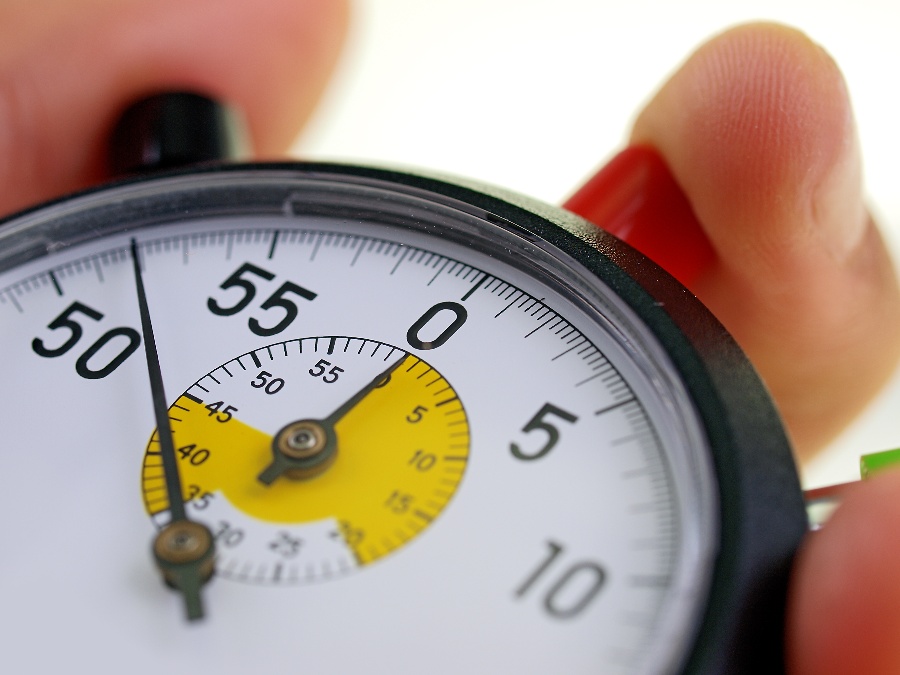
Daily vehicle inspections are an important part of fleet safety and maintenance. You need to know how your vehicles are doing - that the tires are undamaged and everything is working correctly - before sending your drivers out on their daily routes.
However, scheduling vehicle maintenance in your routine can be tricky. How long should a vehicle inspection take, and how much time is appropriate to allocate to your drivers/team each day to take care of inspections?
While there's not an exact number (every vehicle and checklist can be different), you can determine an appropriate time window and help your drivers stay both safe and on schedule.
A Rough Estimate of Inspection Time
Depending on your vehicles, equipment, supplies, and data-entering methods, a vehicle inspection can take anywhere from 15 minutes to 90 minutes. Inspecting a big rig before it embarks on a 2-week journey deserves more time and thoroughness while inspecting a sedan before a 2-hour route may be done with a simple 10-minute "flight check". Work trucks, delivery vans, and passenger vehicles will naturally find a time somewhere in between.
Estimate High, Low, and Average Inspection Times
To know the right inspection times for your team, start with your checklist and the times your drivers usually take.
- Consider the fastest inspection times on your team - and check again for thoroughness to make sure those times are accurate to a complete inspection.
- Then consider the slowest times - and check for foot-dragging or confusion to make sure these times are accurate.
- Average all inspection times to get a sense for the team's and checklists' overall time requirements.
- Then have an experienced and trained mechanic go through your checklist and get a pro-read on their inspection time.
Now you have four numbers that will give you the range on how long your daily vehicle inspections take or should take.
Too Fast vs Too Slow for Fleet Vehicle Inspections
Next, red-flag any inspection times that are significantly faster or slower than the average cluster. There are serious consequences to inspecting either too fast or too slow.
Too Fast: Risk of Missing Dangerous Issues
If you have a driver who inspects in half the time, make sure they are actually checking everything on the list and securing what needs to be secured. Double-check for "copy-pasted" answers, slapdash supplies, or maintenance issues that simply aren't noticed. Too-fast inspections can lead to overlooked issues and even dangerous problems on the road.
Too Slow: Losing Productivity and Time
If you have a driver who inspects much slower than the rest, you are likely losing productivity (and money) as a result. While they may be checking everything carefully, it is also possible that this driver does not understand the checklist, doesn't know how to look for the listed issues, or is clumsy with the data entry method. Unfortunately, it is also possible your slowest inspection routines are foot-dragging to be paid for easier hours of work.
Optimizing Your Fleet's Inspection Times
The best way to make sure you are spending the right amount of time on fleet inspections is to optimize. You can streamline your inspection routine and the time it takes with a few improvement measures.
- Provide your team with a digital inspection app with a pre-built checklist and photo feature so that entering their daily inspection report is faster and easier.
- Streamline your inspection checklist
- It can help to personally go through an inspection process to identify bottlenecks, redundancy, and unnecessary data
- Provide additional inspection training to make sure everyone is up-to-speed.
- If your fastest/slowest is new and wasn't there for your last inspection training, this may be the problem.
- Split lengthy inspection duties between set-up (beginning of day) and tear-down (end of day) routines.
- Encourage your fast-and-accurate team members to help too-fast or too-slow team members in their inspections.
Keep Your Fleet in Top Condition with Wilmar Inc
Here at Wilmar, we are passionate about all things fleet management. We can help you build a fleet, provide fleet maintenance, and equip you with tools for expert fleet management. But only you and your team can make sure your vehicles are ship-shape every morning before embarking on the daily routes. By optimizing your inspection routine, you can make sure your vehicles are safe, track maintenance arcs, and make the best use of your drivers' time.
For more fleet management insights or maintenance tips, contact us today!








